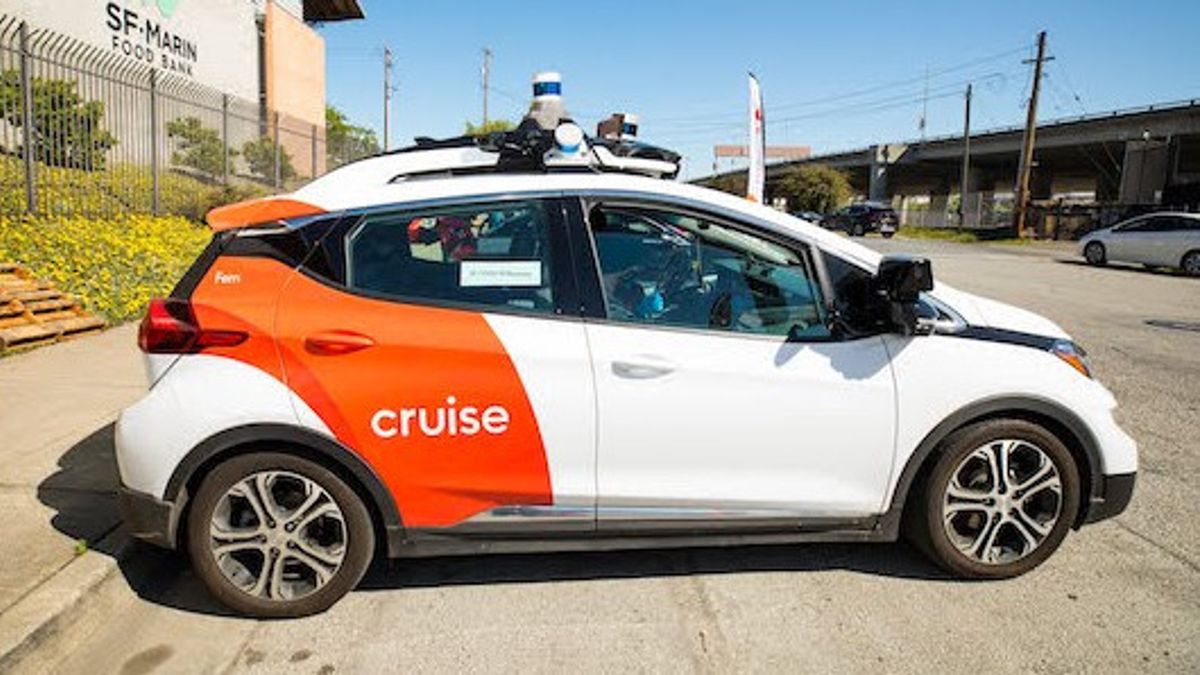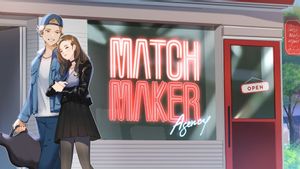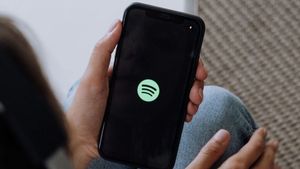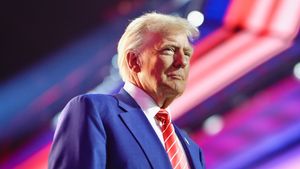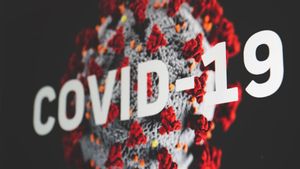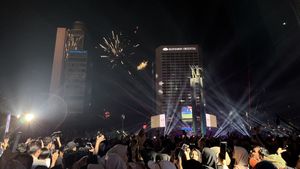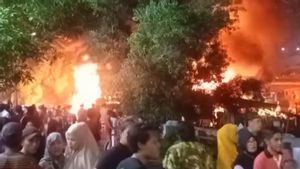JAKARTA - General Motors Co.'s Cruise AV on Thursday, June 2 could become the first company to obtain permission to levy fees on their self-driving cars in San Francisco. This applies if they can overcome objections from city officials.
Autonomous test cars with human safety drivers present have become a common sight in San Francisco. Even completely driverless ones are becoming more and more common. Turning autonomous cars into a new business in a major US city will mark a new milestone towards driverless taxi services. Permits are Cruise AV's final hurdle in California.
Disability groups and businesses have expressed their support. State commission staff have also recommended approving Cruise, saying the proposal is sufficient to protect passengers' safety.
Citing safety concerns, San Francisco firefighters, police, and transit want state regulators to enforce restrictions before allowing Cruise autonomous vehicles (AVs) into the ride-hailing business. They recommended that further approval be required to add more cars and a new working group of state and local officials.
"The deployment of driverless AV on a much larger scale will increase the likelihood that unusual AV behavior could result in serious injury or death," city officials wrote to the California Public Utilities Commission, which is scheduled to consider Cruise's permit application on Thursday, June 2.
Local officials said a "confused" Cruise AV briefly blocked a San Francisco fire engine in April that was on its way to the fire site by setting off the alarm. A few days earlier a driverless Cruise car that was stopped by the police moved before the police finished checking on its condition. Cruise said at the time his car made the decision to find a safer place to stop.
While rival Alphabet Inc's Waymo has been charging for trips in suburban Phoenix since 2018, Cruise's proposed deployment in his hometown of San Francisco, a more densely populated, hilly, and unpredictable area, is seen by tech experts as a more big challenge.
Waymo has been providing driverless rides to employees in San Francisco since March, and Cruise has been offering free late-night trials to the public since February. Cruise wants to start by charging over the same period, in a geographic area that avoids the city center.
But there's also a long-standing problem that self-driving cars can't always predict exactly how humans will react to changing events, including the actions of cars. Cruise even named the problem, "spouse problem," says one former employee.
A decade since California first allowed public testing of self-driving vehicles, smooth rides that follow traffic rules are common, but surprises remain.
In a public presentation last year, Cruise senior director Brandon Basso described "kinematic uncertainty," a challenge self-driving cars face in predicting human actions on the road and deciding, for example, when to budge.
Cruise says his vehicles understand complex social dynamics and protect themselves from uncertainty by taking safe actions.
Even San Francisco officials opposing the permit said that despite the "glaring exceptions, driverless AV Cruises generally operate as a cautious and compliant defensive driver."
Although self-driving cars can adapt to the nearest rule breaker. "Human error or behavior, such as violation of road rules that deviates from a possible pattern of behavior, is a factor in the disproportionate number of collisions," Waymo told Reuters in a statement.
Cruise didn't disclose what his three former employees said were two key safety statistics internally: how often his cars encountered new situations or experienced what he called "safety-critical incidents," a combination of accidents and near misses.
SEE ALSO:
Public records seen by Reuters show the computer-controlled Cruise suffered 34 accidents that involved bodily injury or caused more than $1.000 in damage and loss across nearly 3 million miles of driving territory over the four-year span ending May 2021.
For 28 cases, Cruise pursued technological improvements, which were often associated with improved predictions of what humans would do. It has also relaxed some rules: including a response to a 2019 crash that allowed cars to "adjust strict compliance on all marked lanes," so they can move around parked trucks or slow cyclists.
Waymo in January requested a court order to keep their data confidential and called it a trade secret. The state did not oppose the request, and Waymo's records remained edited.
Several self-driving car accidents themselves have led to lawsuits. A bicycle courier and scooter rider have sued Cruise. Even Waymo had to solve the 2016 car crash. Cruise said the car didn't drive itself during the scooter incident and is fighting the case.
Cyclist Christopher McCleary, who last month settled his lawsuit, said he had suffered permanent injuries from crashing a Cruise car he said stopped unexpectedly in San Francisco in 2018. He questioned the experimentation of driverless cars in public.
"Unfortunately, I feel like Cruise 'learned' by bumping into me and this was actually a sacrifice I had to make to allow Cruise to be 'better' at predicting situations," McCleary said.
The English, Chinese, Japanese, Arabic, and French versions are automatically generated by the AI. So there may still be inaccuracies in translating, please always see Indonesian as our main language. (system supported by DigitalSiber.id)
